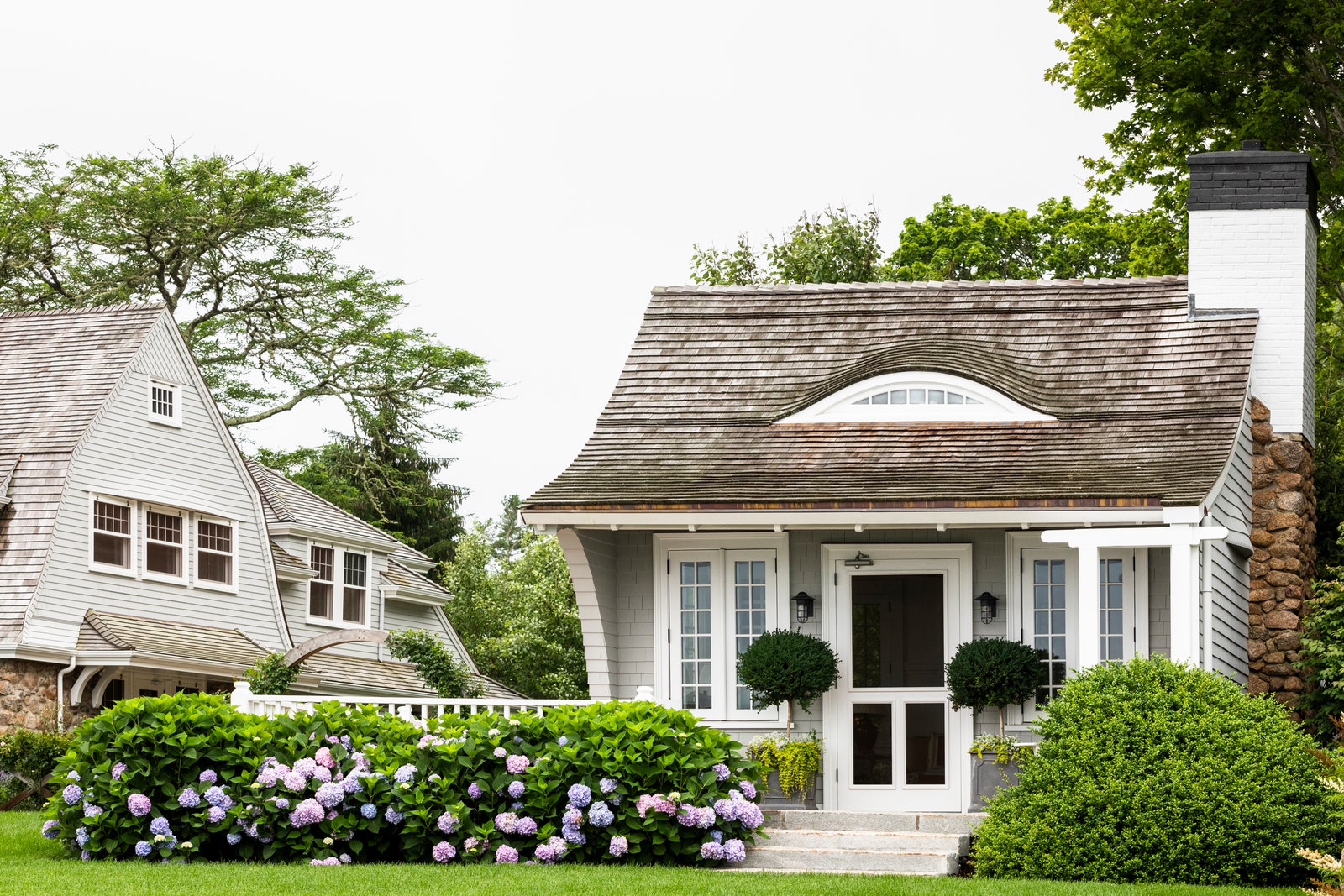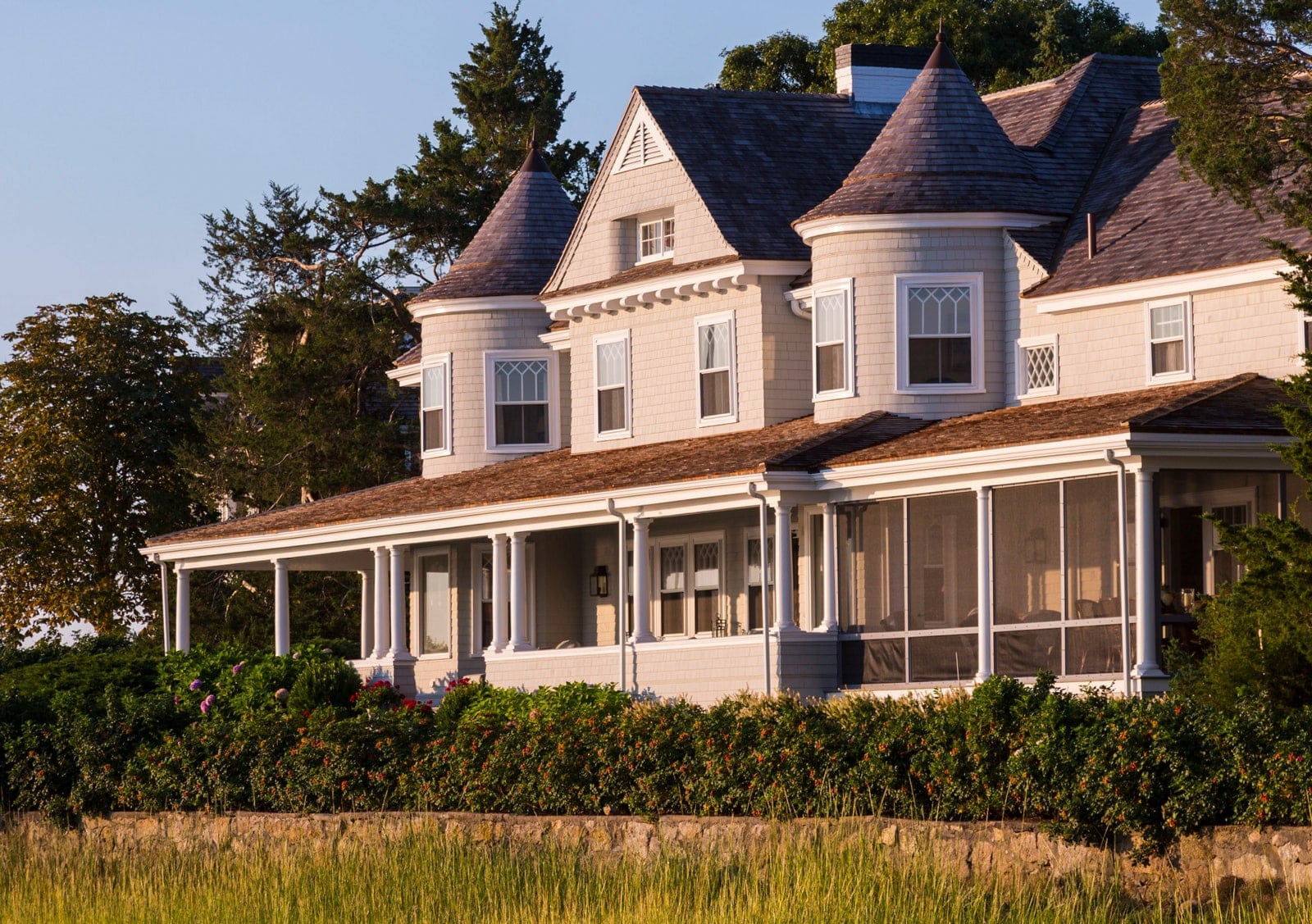Cape Cod House: Everything You Need to Know

This post was originally published on this site
As the region became more accessible to tourists, Cape Cod houses evolved. Gone were the days of exclusively tiny houses as additional wings were added (or newer homes were simply built bigger), front porches and decks became more common, and dormers were appended to create more light and space. In the 1920s, America experienced a wave of Cape Cod revival homes, which channeled the spirit of the originals and were often created as starter homes for first-time home buyers. While less evocative of the coast or New England, these revival houses can be seen throughout much of the United States. “We see a lot of takes on a modern ‘shingle style’ house now,” McDonald explains. “You’ll see wood shingles, steep pitched roofs, porches, dormers, windows with grilles, open spaces, and informal layouts. There is less symmetry but more care about balance and proportion.”
Defining elements and characteristics of a Cape Cod house
In the most traditional sense, Cape Cod homes include the following elements:
- One or one-and-a-half stories
- Rectangular floor plan
- Shingle cladding
- Gabled roof
- Front façade with a door and windows and little ornamentation
- Central staircase
- Central chimney
- Small square footage
As the style evolved, Cape Cod homes have come to include the following features:
- Decks and covered porches
- Dormer windows
- Outdoor showers
- Larger square footage
- Outdoor showers
- More sophisticated floor plans
- Expanded windows
Frequently Asked Questions
What is the difference between a Cape Cod and Colonial home?
Colonial homes are historically considered an offshoot of the original Cape Cod homes and are usually bigger. They feature similar rectangular floor plans, though they often include at least two stories. Aside from the square footage, colonial homes typically employ gambrel roofs—a main feature of Dutch colonials—while Cape Cod houses traditionally make use of gable roofs. Colonial houses may also include more ornamentation, like the use of columns, which is less common on traditional Cape Cod homes.
Why are Cape Cod houses so popular?
Though Cape Cod houses had humble beginnings, they’ve evolved into coveted, beloved structures. According to Wright, it’s the “cultural knowledge” of what the homes represent that keep them so popular. “The style is so warm and comfortable, and it just says summer,” Wright says. “It just screams summer.” Seen in movies and TV shows, the style is further embedded into pop culture as emblematic of warm weather and easy living.
What is the disadvantage of a Cape Cod house?
According to McDonald, when in their native setting, there are little disadvantages to living in a Cape Cod house. “Homes here evolved with the climate and the need,” he explains. “These houses would be at home in nearly any seasonal resort type area in Southern New England.” However, the small footprint of this type of house—in its most traditional sense—can be disadvantageous for some. Traditional Cape Cod homes also tend to have low ceilings and less natural light from the relatively small windows; however, this might not be an issue with remodeled homes or new ones that channel the sprit of the Cape Cod style without focusing on the literal.
“I don’t think there are disadvantages to this style,” Wright says. Modern makeovers can usually help smooth out any issues for older homes while retaining their charm and significance. “We’ve all seen it: the bright white house with divided light windows and dark green shutters and an American flag on a flagpole,” he adds. “It’s summer; that’s an iconic image.”




Responses